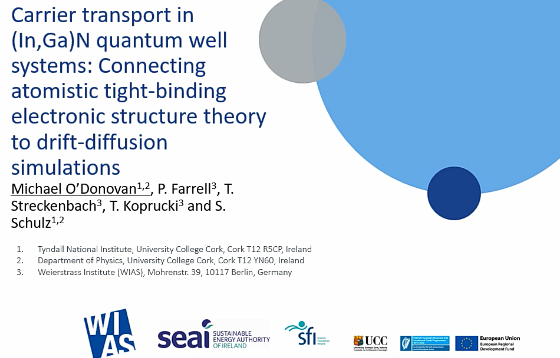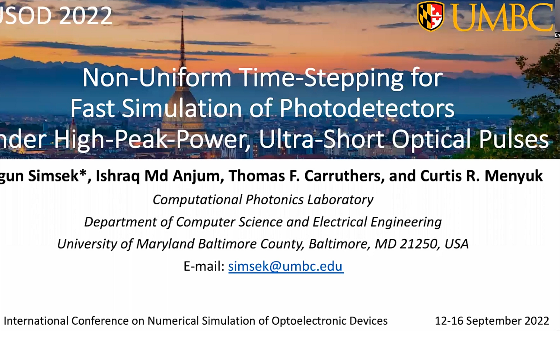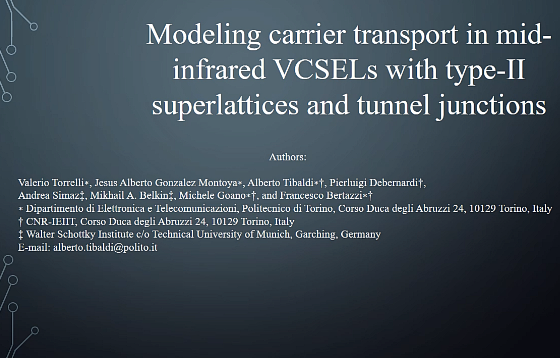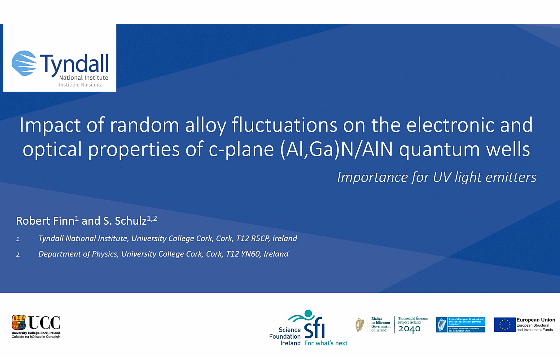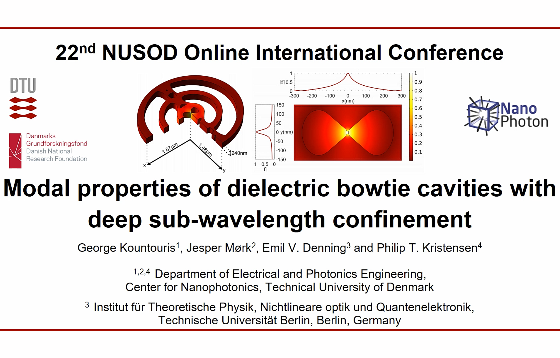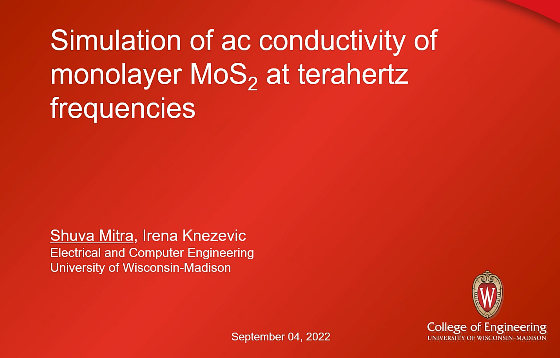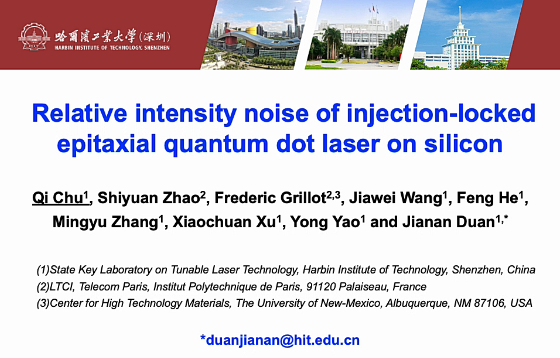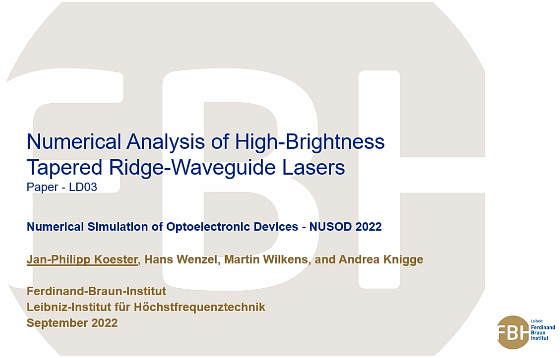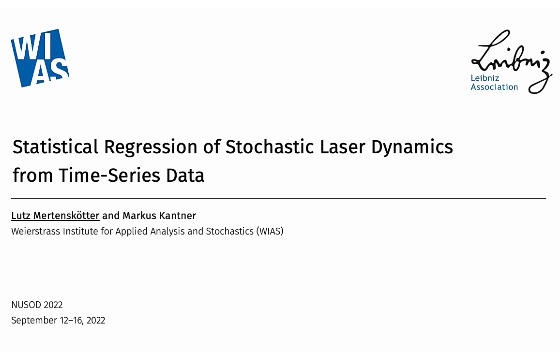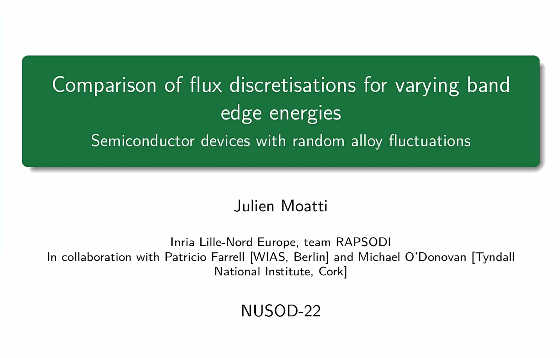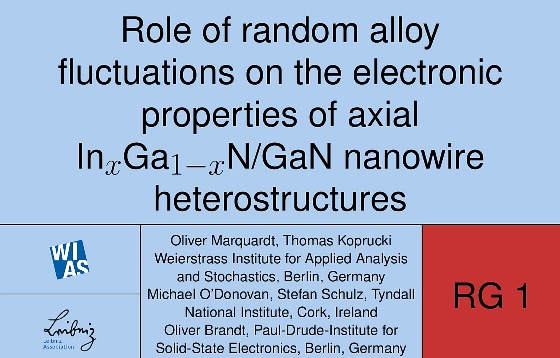MM02 – Carrier transport in (In,Ga)N quantum well systems: Connecting atomistic tight-binding electronic structure theory to drift-diffusion simulations
Understanding the impact of the alloy microstructure on carrier transport in (In,Ga)N/GaN quantum well systems is important for aiding device design. We study the impact that alloy fluctuations have on uni-polar carrier transport for both electrons (n-i-n junction) and holes (p-i-p junction) using a multiscale framework. To do so we connect an atomistic tight-binding model […]




